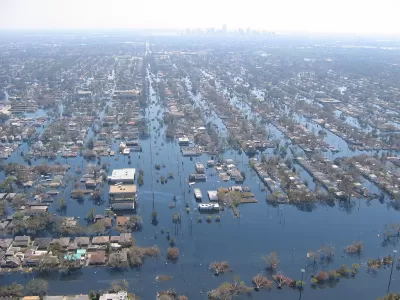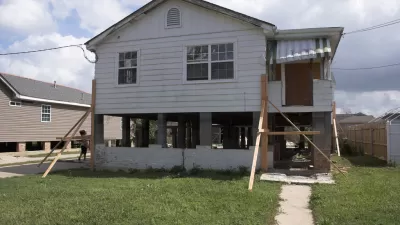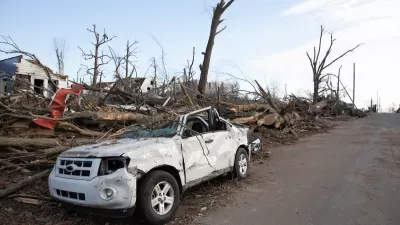Recently released flood maps created by FEMA for the city of New Orleans are receiving criticism for being 'overly optimistic' when it comes to risks posed by hurricanes and rising sea levels.

In an Op-Ed in The New York Times, Tulane University professor Andy Horowitz finds fault with the recently released flood maps for New Orleans that downplay risks in potentially vulnerable neighborhoods across the city. Horowitz writes that FEMA's original flood maps, drafted in 2009, were redrawn following complaints by New Orleans officials that they failed to take into account the new levee protections built after Hurricane Katrina. The new maps show no flood risks in many of the neighborhoods that flooded during Katrina, meaning homeowners in those neighborhoods no longer are required to buy flood insurance. Horowitz sees a potential catastrophe in the making.
[M]any of us will hold our breath through hurricane season nonetheless, because we know that the new maps reflect questionable assumptions. First, they assume that this time the Army Corps of Engineers’ work can be trusted, and the levee system will not fail again. ...a likely outcome of this new federal policy is that when — not if — New Orleans floods again, thousands of people will be worse off than they were during Hurricane Katrina: When their homes flood, they will not have flood insurance.
FULL STORY: New Orleans’s New Flood Maps: An Outline for Disaster

Alabama: Trump Terminates Settlements for Black Communities Harmed By Raw Sewage
Trump deemed the landmark civil rights agreement “illegal DEI and environmental justice policy.”

Study: Maui’s Plan to Convert Vacation Rentals to Long-Term Housing Could Cause Nearly $1 Billion Economic Loss
The plan would reduce visitor accommodation by 25% resulting in 1,900 jobs lost.

Planetizen Federal Action Tracker
A weekly monitor of how Trump’s orders and actions are impacting planners and planning in America.

Wind Energy on the Rise Despite Federal Policy Reversal
The Trump administration is revoking federal support for renewable energy, but demand for new projects continues unabated.

Passengers Flock to Caltrain After Electrification
The new electric trains are running faster and more reliably, leading to strong ridership growth on the Bay Area rail system.

Texas Churches Rally Behind ‘Yes in God’s Back Yard’ Legislation
Religious leaders want the state to reduce zoning regulations to streamline leasing church-owned land to housing developers.
Urban Design for Planners 1: Software Tools
This six-course series explores essential urban design concepts using open source software and equips planners with the tools they need to participate fully in the urban design process.
Planning for Universal Design
Learn the tools for implementing Universal Design in planning regulations.
Caltrans
Smith Gee Studio
Institute for Housing and Urban Development Studies (IHS)
City of Grandview
Harvard GSD Executive Education
Toledo-Lucas County Plan Commissions
Salt Lake City
NYU Wagner Graduate School of Public Service





























